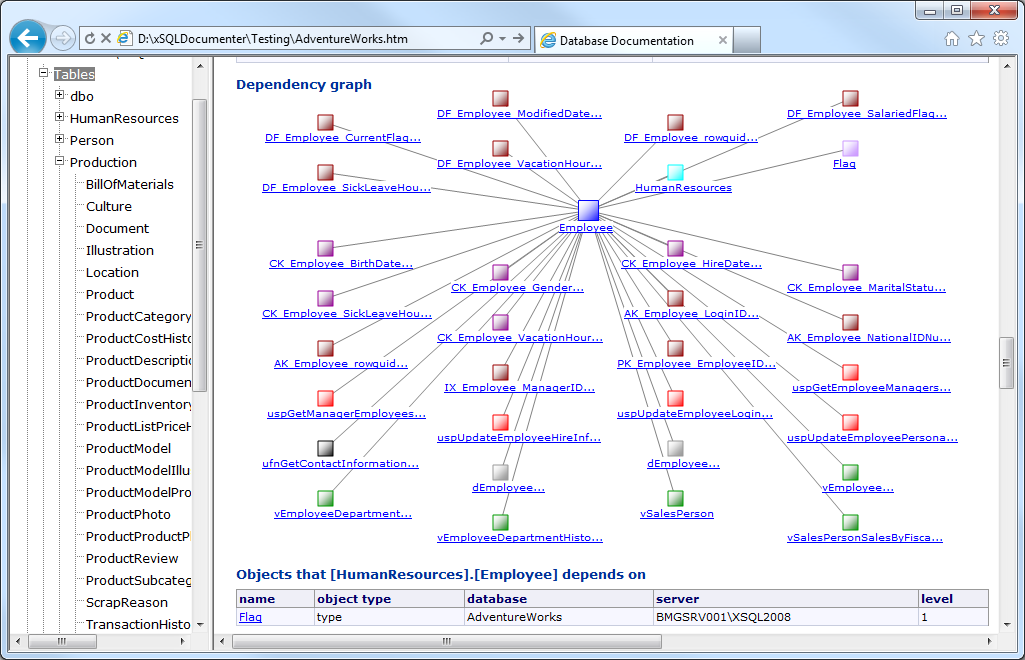

- Dependency graph builder online full#
- Dependency graph builder online software#
- Dependency graph builder online code#
Dependency graph builder online code#
They still need some care to make sure they are stable code and not some Release Candidate or even worst, feature branches. YELLOW artifacts are the BRANCH packages, which means any stable artifact which doesn’t respect the standard regular expression of Maven versions.Keeping them under control and being sure your release package doesn’t contain any of them is crucial. RED artifacts are the SNAPSHOT packages, the ones which need the most care, if you are a developer or a configuration manager.

They can focus their attention on areas which are under development or comes from separate development branches:
Dependency graph builder online software#
In one glance Pathfinder provides useful informations about your project’s dependencies. Nodes color allow users to distinguish types of software dependencies and their status. This approach gives birth to “branch-packages” containing such experimental code which should be tracked carefully since not production-ready. Moreover agile developers may create additional development branches over the code to isolate their works or to experiment new ideas. Integrating Pathfinder analysis in the CI chain ensure all projects dependencies are gathered and sent to the server to be processed and updated, while the graph visualization interface provides an immediate feedback on many-to-many relations across all possible dependencies. It is not trivial for a single project but it may become almost impossible to accomplish, and even harder to maintain, over all available dependencies.
Dependency graph builder online full#
To have a full picture of all software dependencies, they should analyze all projects’ candidates which have direct or indirect relations with their work and note down each dependency which may cause conflicts. Many developers work on a few projects at once and are not aware of all other teams’ work. The user interface provides end-users with tools to analyse the data. All graph functionalities are rendered via the linkurious.js graph visualization library which allows a quick and flexible data manipulation.Ĭlients and server usually work in the background, connected to the CI chain and collecting information and expanding dependency analysis coverage.
A User interface, in the form of a standalone JavaScript application, which provide end users with an intuitive relational graph with all dependencies information. All basic actions to manipulate or show graph details can be managed using simple http calls. Communication flow between client-server and server-web interface is exposed via a JSON REST API. It provides the performances needed to store an high number of nodes/relations. 
Due to its relations-oriented data structure data is stored into an embedded Neo4J server.
A Server, which gather all informations from several clients/builds and aggregates them. A Client, actually in the form of a Maven plugin, collects build data and send it forward to the central server. Pathfinder is organised into three elements for a flexible integration over different CI architecture: Pathfinder integrates in a company Continuous Integration (CI) chain and collects all dependency information at each build, aggregating them in a global view. Pathfinder helps developers and release managers (or any other role in a DevOps-oriented team) address these kinds of issues in a quick and intuitive way. Some teams adopt lifecycle tools like Maven to provide partial control on dependency management, but they lack the overall view on the whole project ecosystem. Here, the code may be split in several modules across different teams, which are sometimes geographically distributed. This makes “legacy” software dependencies and their size an even more serious problem.įor these reasons, developers introducing new software dependencies should always check if they will conflict with existing ones or if a former version of the same library is already in use. Change Request over core legacy code must be deeply analysed to know all the pieces of code impacted by such change. Some companies like Facilitylive manage multiple software projects. And with dependencies, the project becomes more complex to manage. As a software project grows with new features, software dependencies grow as well. In the case of gcc, this switch is MMD.Almost every software program has third parties dependencies. With the right switch, you can make it spit out. The one that I want to talk about, because it’s the most obvious, is the compiler. Therefore, I’d be remiss (or just plain lazy thus illustrating my point) if I didn’t mention that there are tools available to automatically extract source code dependencies. When you’re a software developper, laziness is always an option. Namespace fs = std :: filsystem void CompileToExecutable ( const std :: string & rootDir, const std :: string & execName ) Tooling







 0 kommentar(er)
0 kommentar(er)
